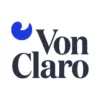A robust content marketing strategy can distinguish a thriving brand from its competitors. This strategy isn’t just about producing content—blogs, videos, social media posts—but about creating a consistent narrative that resonates with your audience, aligns with your brand values, and achieves your business objectives. Business giants and startups alike are recognizing that an effective content strategy can transform passive audiences into engaged communities and drive bottom-line results.
Understanding the Content Pillars Framework
To create a high-impact content marketing strategy, understanding and utilizing the Content Pillars framework is essential. Content Pillars are broad topics that support your brand’s mission and values, serving as central themes around which all content is developed.
Awareness: The first pillar in our framework is awareness. This content is designed to introduce your brand and value proposition to potential customers. Utilizing engaging and educational content strategies, such as infographics, introductory blog posts, and video explainers, can effectively reach your target audience. By answering common customer queries and illuminating industry insights, your content attracts and informs, setting the stage for deeper engagement.

Awareness Content Strategy Example
Consider a financial software company that aims to increase awareness. A well-crafted blog series on the fundamentals of financial management could address potential customers’ questions, providing valuable knowledge while positioning the company as a thought leader.
Consideration: Once awareness is achieved, the consideration stage convinces your audience why your product or service stands out. This pillar’s content should delve deeper into specific benefits and how they address the pain points of your audience. Demonstrations, case studies, and comprehensive guides could serve as excellent formats for this stage.
Consideration Content Strategy Example
An eco-friendly home cleaning product company might showcase case studies of customers using their products with significant success, helping prospective customers see the tangible benefits and build trust in the product’s effectiveness.
Conversion: The conversion pillar is where the rubber meets the road—turning interested prospects into paying customers. At this stage, detailed product comparisons, testimonials, and limited-time offers become crucial. Your content should persuade and facilitate a decision, eliminating any remaining doubts.
Conversion Content Strategy Example
A subscription box service might utilize personalized email marketing campaigns with testimonials and offers to encourage hesitant prospects to take the next step and subscribe.
Loyalty: Building a content marketing strategy isn’t simply about gaining new customers—retaining them is equally important. The loyalty pillar aims to turn one-time customers into repeat buyers and brand advocates. Content strategies here might include customer loyalty programs, exclusive updates, and community-building initiatives such as user-generated content campaigns.
Loyalty Content Strategy Example
For a tech gadget company, creating a VIP community forum where customers can share tips, seek advice, and access exclusive deals could significantly enhance loyalty and foster a sense of belonging.
Advocacy: Finally, inspiring advocacy can turn your satisfied customers into brand ambassadors. Encourage them to share their experiences with your product or service on social media, write reviews, or participate in referral programs. This word-of-mouth marketing is an invaluable asset, as authentic endorsements often lead to a higher rate of new acquisitions.
Advocacy Content Strategy Example
A luxury fashion label might launch a referral program rewarding customers for bringing friends and family into the fold, thereby creating a network of passionate advocates.
Frequently Asked Questions
What is a content marketing strategy?
A content marketing strategy is a comprehensive plan for creating, publishing, and managing content to meet specific business goals. It serves as a roadmap that guides content creation and helps in communicating consistently with the target audience.
How do you build a content strategy template?
Building a content strategy template involves understanding your audience, defining your brand message, mapping out content formats and channels, and setting clear objectives and metrics. Tools like content calendars and buyer personas can form foundational elements of your template.
Can you provide an example of content strategies?
Sure! A skincare brand may use a multi-channel content strategy focusing on educational blog posts, customer testimonials on social media, and expert interviews in video formats to reach targeted segments differently but coherently across platforms.
FAQ: Understanding and Crafting a High-Impact Content Marketing Strategy
Creating a successful content marketing strategy is an essential component for businesses aiming to engage their audience, build brand awareness, and ultimately drive conversions. Below, we address some frequently asked questions that delve into the core of effective content marketing strategies and provide guidance on how to craft and enhance your approach.
What are the key elements of a high-impact content marketing strategy?
A high-impact content marketing strategy typically includes several key elements:
- Clear Objectives: Define what you aim to achieve through content marketing, whether it’s brand awareness, lead generation, customer retention, or another goal.
- Audience Personas: Develop detailed profiles of your ideal customers, including their demographics, interests, pain points, and buying behavior. Tailor content to meet these personas’ needs.
- Content Audit and Gap Analysis: Review existing content to determine what performs well and identify areas where new content can fulfill unmet needs or opportunities.
- Content Plan and Calendar: Develop a content calendar that outlines what type of content you’ll publish, when, and through which channels. This helps maintain consistency and alignment with your strategy.
- Content Distribution Plan: Identify the platforms and channels (social media, email, blogs, etc.) where your audience is most active and which are best suited for disseminating your content.
- Measurement and Analytics: Set key performance indicators (KPIs) and metrics to assess the effectiveness of your content in achieving your objectives. Tools like Google Analytics can help track performance and ROI.

How do I go about crafting my own content marketing strategy?
Creating your own content marketing strategy involves several steps:
- Research and Set Goals: Start by understanding your market, competitors, and audience. Set SMART (Specific, Measurable, Achievable, Relevant, Time-bound) goals that align with your overall business objectives.
- Develop Audience Personas: Use data analytics, surveys, and market research to build accurate personas. Ensure your content aligns with their needs and challenges.
- Content Audit: Analyze your existing content to determine strengths and weaknesses. Identify content types that align with your audience’s preferences.
- Strategize Content Types and Channels: Decide what types of content (blogs, videos, podcasts, infographics) resonate with your audience. Choose the platforms where your content will have the greatest impact.
- Build a Content Calendar: Plan when and where content will be published. Consistent scheduling keeps your audience engaged and reinforces your brand presence.
- Implement and Analyze: Launch your strategy, regularly monitor its impact, and remain flexible to tweak your approach based on performance data.
What makes a content marketing strategy effective and high-impact?
An effective content marketing strategy is one that achieves your defined objectives and resonates with your target audience. Key characteristics include:
- Relevance: Content should be tailored to your audience’s needs and preferences, offering value and insights that encourage engagement.
- Consistency: Maintain a steady cadence of high-quality content that builds brand recognition and trust over time.
- Adaptability: Be willing to pivot and adapt your strategy in response to data and feedback. Trends, technologies, and consumer preferences change, and your strategy should be flexible enough to evolve alongside them.
- Comprehensive Distribution: Utilize multiple distribution channels to reach a broader audience. Leverage social media, email newsletters, SEO, and partnerships to extend your reach.
- Engagement: Encourage interaction from your audience. Effective strategies often involve calls to action (CTAs) that prompt readers to engage, share, or provide feedback.
What are some tips and tricks for improving my content marketing strategy?
- Repurpose Content: Maximize the value of your high-performing content by repurposing it in different formats, such as turning a popular blog post into a video or infographic.
- Leverage SEO: Optimize your content for search engines to increase visibility. Use keyword research to inform content topics and improve on-page SEO elements.
- Utilize Analytics: Regularly review performance data to understand what works and what doesn’t. Use these insights to refine your content strategy and make informed decisions.
- Stay Updated: Keep abreast of industry trends and emerging technologies. This can provide inspiration for new content ideas and innovative ways to engage your audience.
- Encourage User-Generated Content: Foster a community by encouraging your audience to contribute content. This not only broadens your content pool but also increases engagement.
- Prioritize Storytelling: Craft narratives that connect emotionally with your audience, making your brand more relatable and memorable.
Incorporating these elements and practices can significantly enhance your content marketing strategy’s effectiveness, allowing you to build a stronger connection with your audience while achieving your business goals.
Conclusion
Crafting a high-impact content marketing strategy is more than just producing content—it’s about creating meaningful connections with your audience through informed and intentional storytelling. By leveraging the Content Pillars framework—Awareness, Consideration, Conversion, Loyalty, and Advocacy—a nuanced approach to your content strategy can emerge, capitalizing on every stage of the customer journey. With these strategies in place, your content efforts are well-positioned to drive engagement, build loyalty, and fuel business growth.


